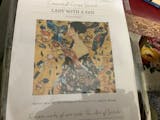Peter Paul Rubens (1)
Peter Paul Rubens, the Baroque Bad Boy of the 17th century, was a Flemish artist who lived life as grandly as his paintings. Born in 1577 in what is now Belgium, Rubens was not just an artist; he was a diplomat, a man of letters, and a patron of the arts. If there was a Renaissance-era version of a rockstar, Rubens would’ve been it: wealthy, well-connected, and with a personal style that screamed, “I know how to throw a party and paint a masterpiece.”
Rubens is best known for his larger-than-life, action-packed Baroque paintings. His works are often filled with dramatic, swirling compositions, plump cherubs, strong, fleshy figures, and rich, vibrant colors—basically, he was a master of making everything look gloriously over the top. His famous works, like The Descent from the Cross or The Three Graces, are marked by dynamic movement and a sense of emotion that feels almost palpable. It's the kind of art that makes you feel like you're part of the scene, maybe a little breathless just looking at it.
One of Rubens’ defining qualities was his love for the human form, and this is reflected in his gloriously full-figured women. Forget the waif-like figures of some of his contemporaries—Rubens was all about celebrating curves, leading to the now-famous term “Rubenesque” to describe women with a fuller, more sensual physique. His Venus paintings, for instance, are all about divine curves and divine beauty.
But don’t let his larger-than-life persona fool you—Rubens was a skilled negotiator and savvy businessman. He was a court painter to European royalty, and his studio was a bustling operation. He often employed assistants to help produce the sheer volume of work he was known for, though it’s clear that the true brilliance came from Rubens himself.








